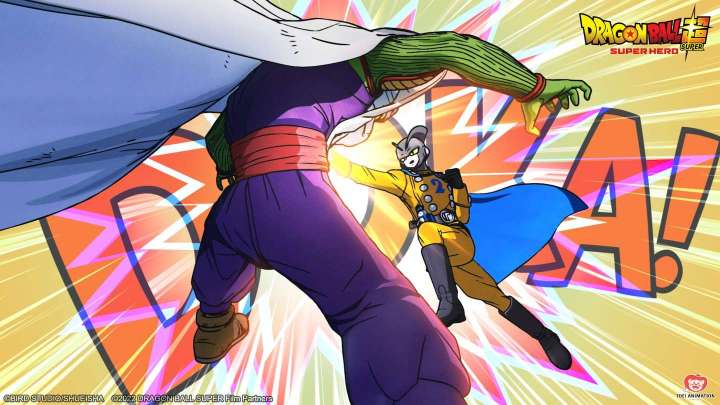Christopher Nolan, Tom Cruise and Nicole Kidman have all done their parts to try to save movie theaters. But every superhero team needs a surprising member. And in the quest to preserve the cinematic experience, the anime distribution company Crunchyroll is punching above its weight.
Forget Tom Cruise and Nicole Kidman. Anime just might save theaters.

Crunchyroll doesn’t get numerous glowing profiles like indie darling A24, the studio behind “Everything Everywhere All at Once,” “Ex Machina” and “The Witch,” among other critical (and personal!) favorites. But the anime-oriented distributor and streaming service purchased by Sony from Warner Bros. in 2021 merged with fellow anime purveyor Funimation this year to become a powerful figure in the world of targeted movie distribution.
Japanese cultural products have an increasingly large footprint in the United States, particularly among younger consumers: manga (Japanese comics) sales nearly tripled between 2021 and 2022. Japanese animation capitalizes on this by offering fans of these popular comics motion pictures and TV shows to accompany them. And there’s a steady flow of product from Japan that is easily dubbed into English.
That said, some of these series have been around — and popular in the United States — for decades. Consider the success of their latest release, “Dragon Ball Super: Super Hero” — a predecessor of which was so popular that it inspired a modest moral panic — which led the box office two weekends ago with a surprisingly strong $21.124 million opening. That figure by itself would make it the ninth-highest-grossing A24 film of all time, domestically, sneaking it just ahead of “The Disaster Artist.” The $31.3 million it has grossed through Monday, Aug. 29 would put it at fifth on the list.
Crunchyroll and Funimation have really perfected the art of releasing these “surprise” hits, propelling a bunch of movies that average consumers might not have heard of into big grossers.
In March, “Jujutsu Kaisen 0: The Movie” opened to $18 million and ended up with $34.5 million total. A previous Dragon Ball picture, “Dragon Ball Super: Broly,” raised eyebrows when it opened to nearly $10 million and more than tripled that figure over the course of its 36-day run. And Crunchyroll’s biggest hit so far, “Demon Slayer the Movie: Mugen Train,” earned a genuinely shocking $49.5 million — a figure that would have made it A24’s third-highest-grossing film.
In the grand scheme of things, both A24 and Crunchyroll are putting up modest numbers; the opening of a new “Demon Slayer” movie will never compare to the opening of a new MCU picture. However, on slower weekends they can be a huge boon: “Super Hero” nearly doubled the opening weekend of Universal’s more mainstream-minded “Beast.”
Earning grosses like this requires two components working in tandem, says Mitchel Berger, senior vice president of global commerce at Crunchyroll.
First is fan passion.
“When you look at anime fans, they love to come together. They love to share their passion. They love to talk, they love to debate. They love to experience things together and doing that in a theater,” he says. “There’s just nothing like it. There is nothing like sitting in a darkened theater with 200 or 300 people who share your passion, watching something that you love and experiencing it together in real time that just can’t be replicated anywhere else.”
Under the watchful eye of Sony, which has vigorously pursued this slice of the theatrical exhibition market, Crunchyroll has turned itself into a dominant force with this sector of fandom. The success isn’t just at the multiplex. Crunchyroll has more than 5 million streaming subscribers, and a thriving live events business: The Crunchyroll Expo sold out its offering this year in San Jose after a hiatus during the pandemic.
The second is reliable expression of that passion. Anime fans have demonstrated to theater owners that animated, subtitled movies that might otherwise be seen as box office killers can actually be a source of consistent revenue.
“We’re not having to spend as much time educating people on what anime is and convincing them that it matters,” Berger says. “The exhibition community in general has seen the performance of things like ‘Demon Slayer’ or ‘My Hero’ or ‘Dragon Ball,’ and they understand what that demand is there.”
As in nearly all business endeavors, success begets success, and the success of Crunchyroll — which has combined Fathom-style one-day or one-week events with a wider release strategy, depending on the popularity of a given property — has demonstrated to exhibitors that the company is able to not only deliver success but can do so nearly on demand during slower weekends.
“There’s a history now. You know, one or two of these films is kind of a, an interesting one-off, but after three or four of these, it’s a trend,” Berger says. “I think that they appreciate what anime is and where it sits in the theatrical community now.”
This is a Band-Aid for the theatrical industry, a small fix in an era where the number of wide releases is nearly one-third fewer compared to 2019 and the box office 28 percent lower. But Crunchyroll is demonstrating how small-but-motivated fandoms can help fill some of the gaps in a weakened box office.
Not all such targeted endeavors will offer a similarly front-loaded box office. “Where the Crawdads Sing,” the first picture from Reese Witherspoon’s Hello Sunshine label that is actively targeting female audiences, has grossed more than $82 million domestically despite a somewhat soft $17 million opening and unduly harsh reviews. Theaters themselves are tapping into motivated fandoms: consider the way Alamo Drafthouse has encouraged a cultlike sensibility surrounding its theaters and AMC’s Adam Aron has, oddly, tapped into the meme stock phenomenon to try to generate a new, more dedicated customer base.
None of these efforts will replace a good, solid run of blockbusters. But if movie theaters can’t sell themselves as a cause, they can sell themselves as a gathering place for subcultures, one niche product at a time.






